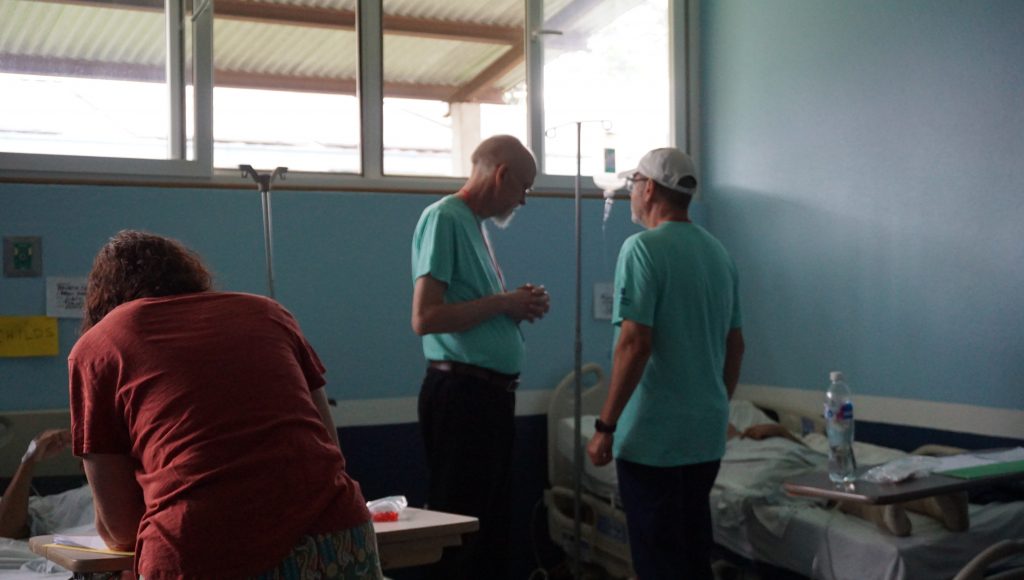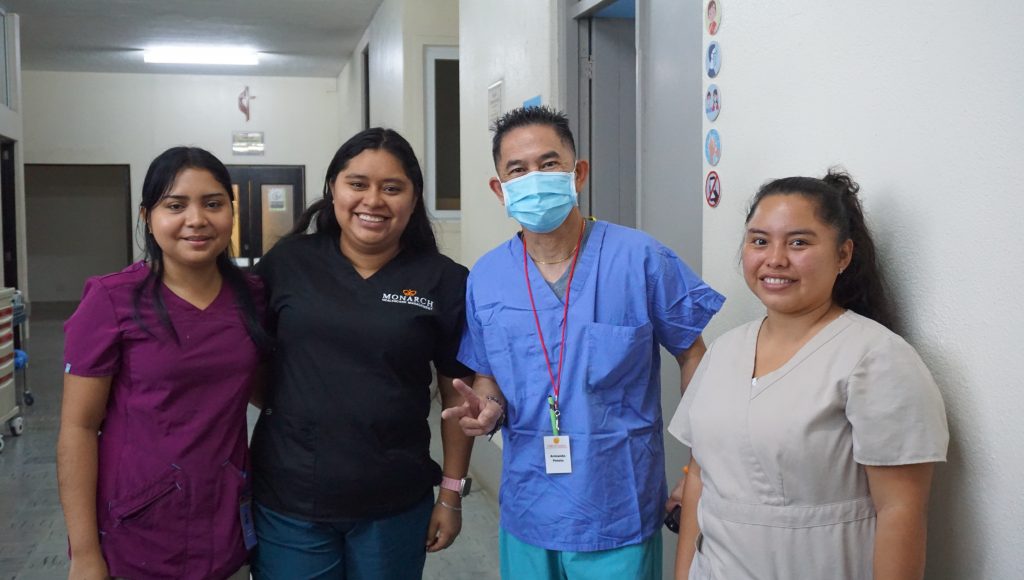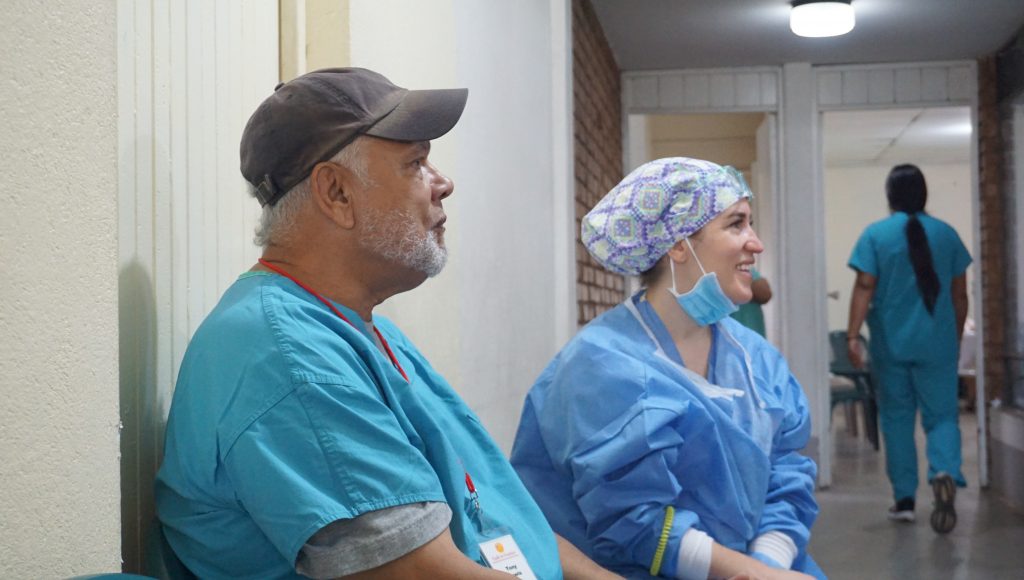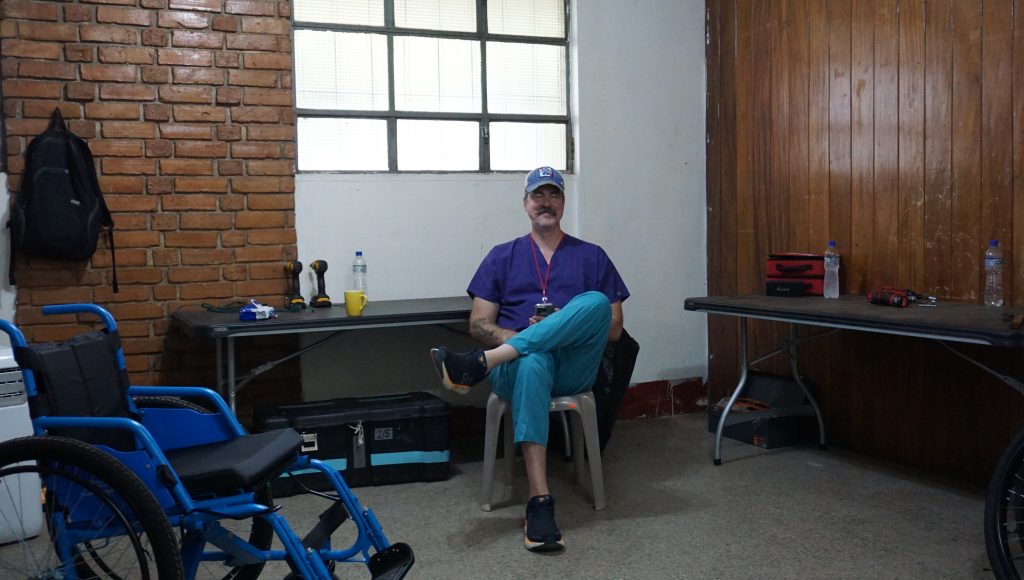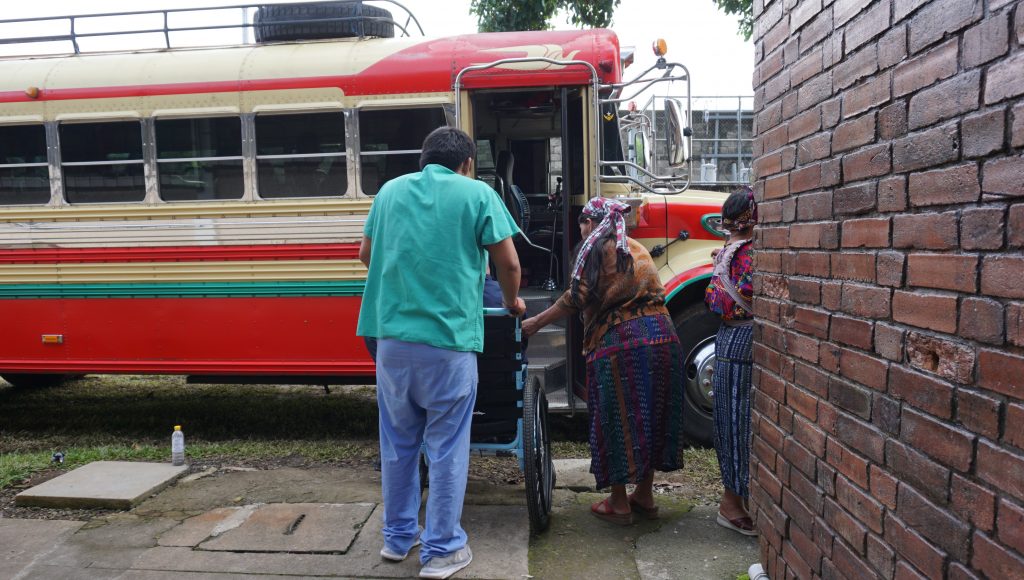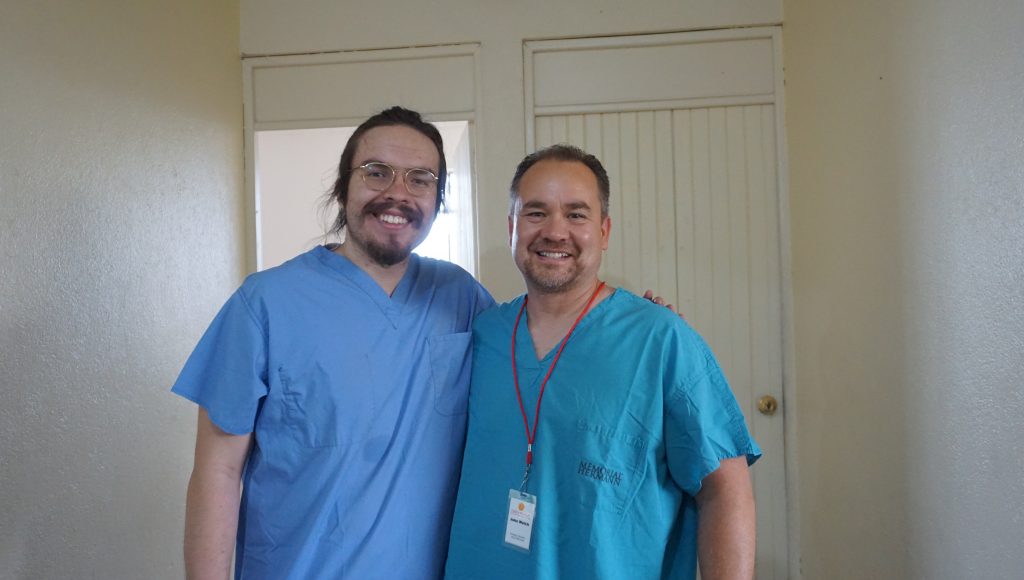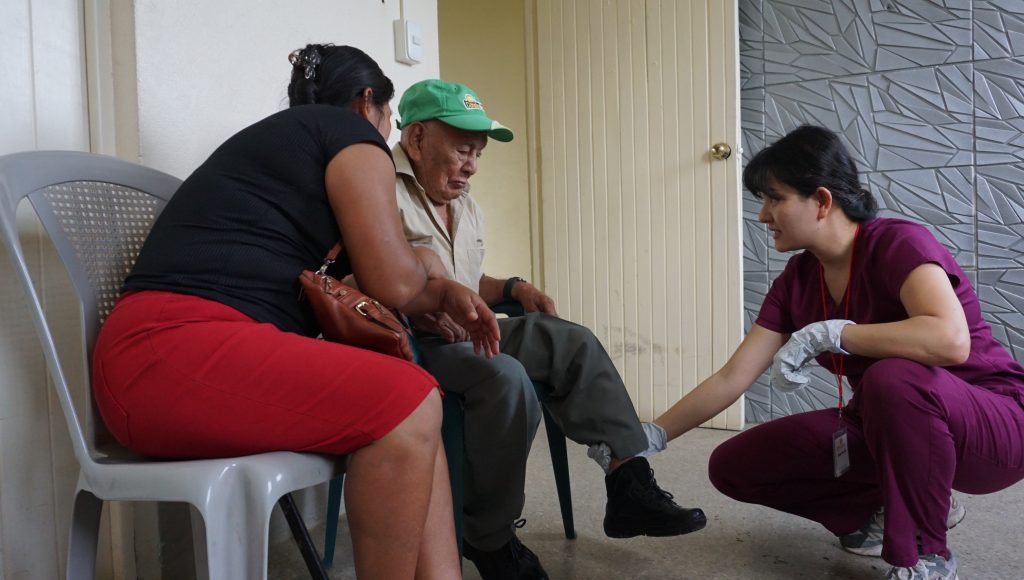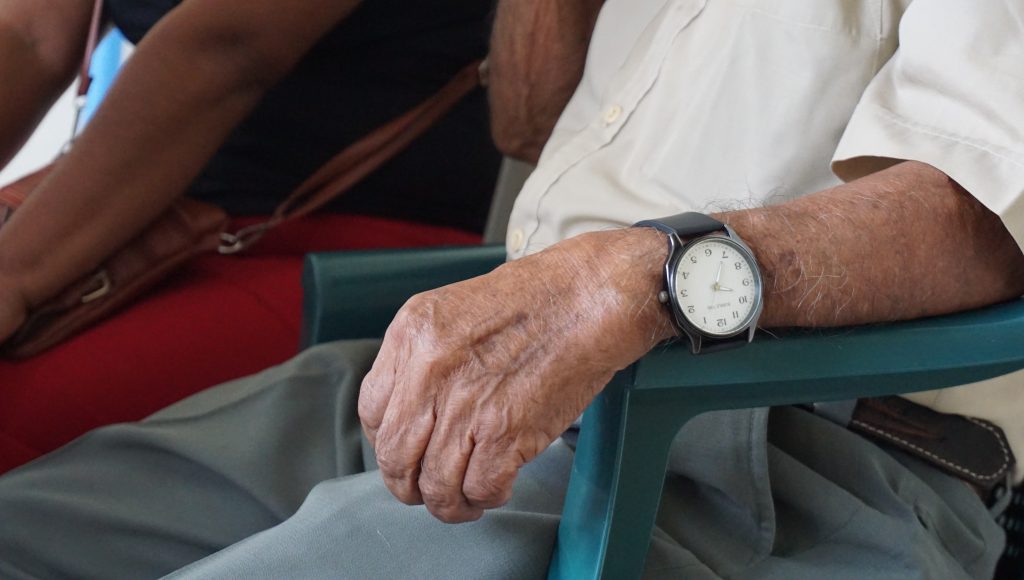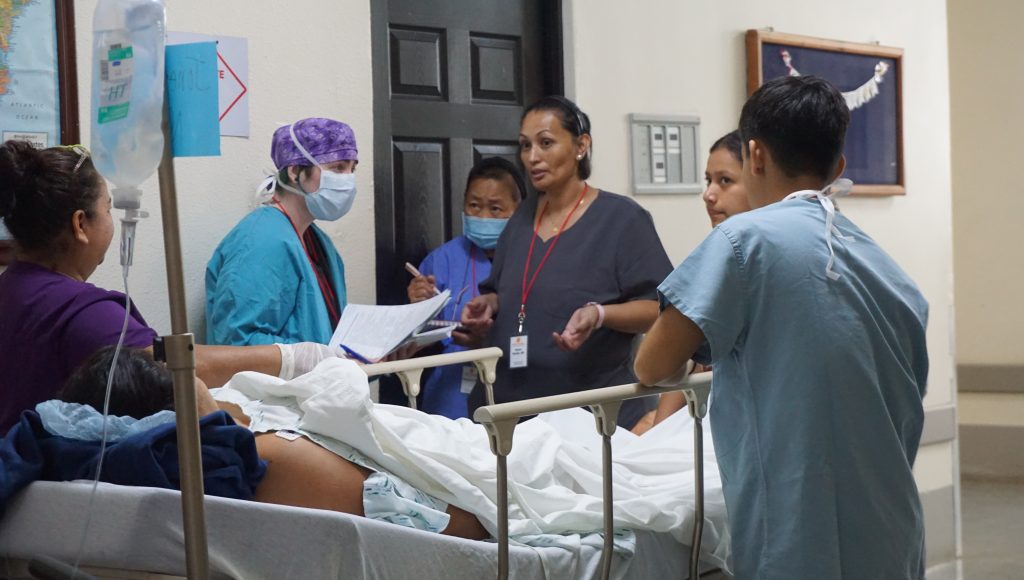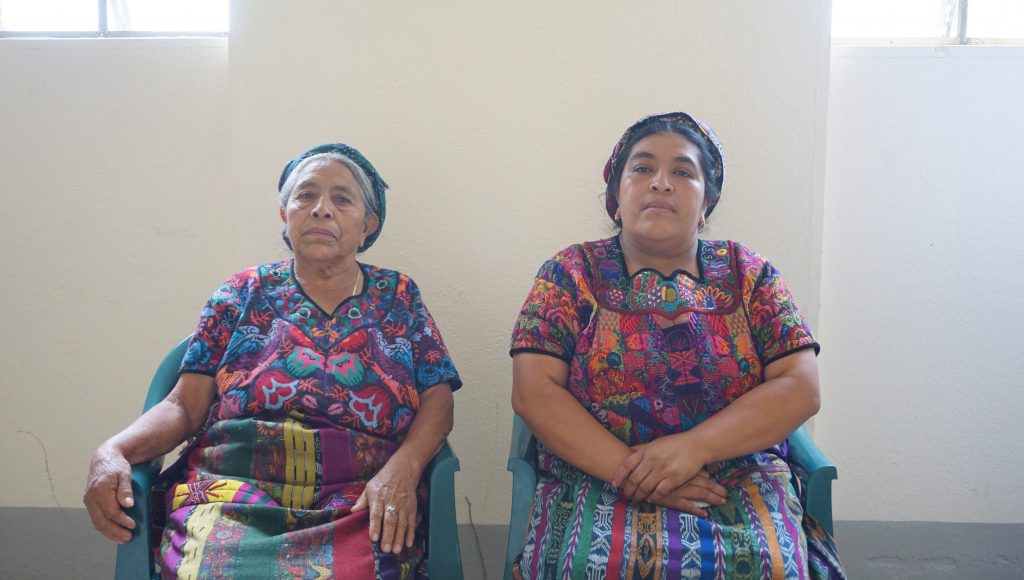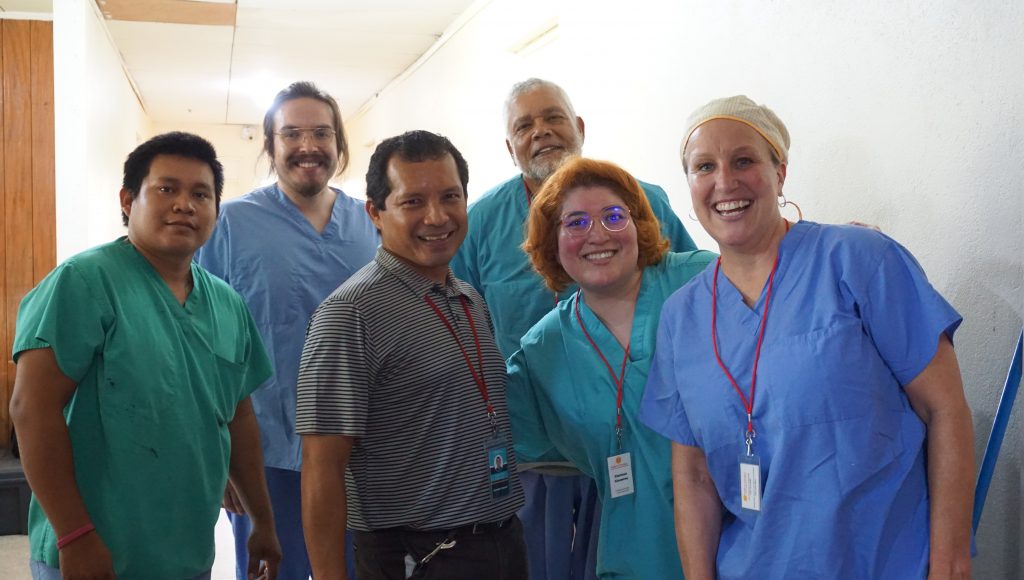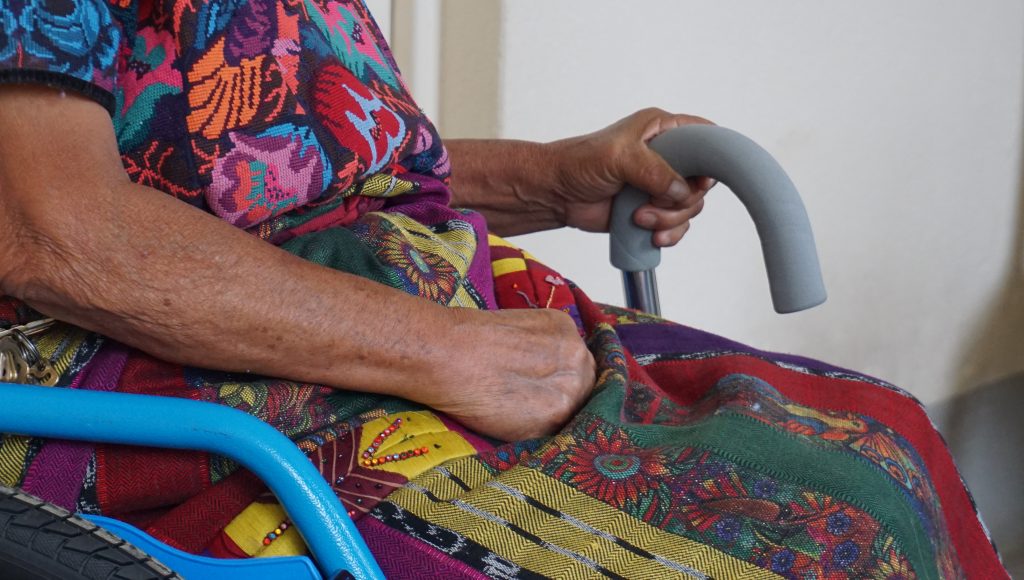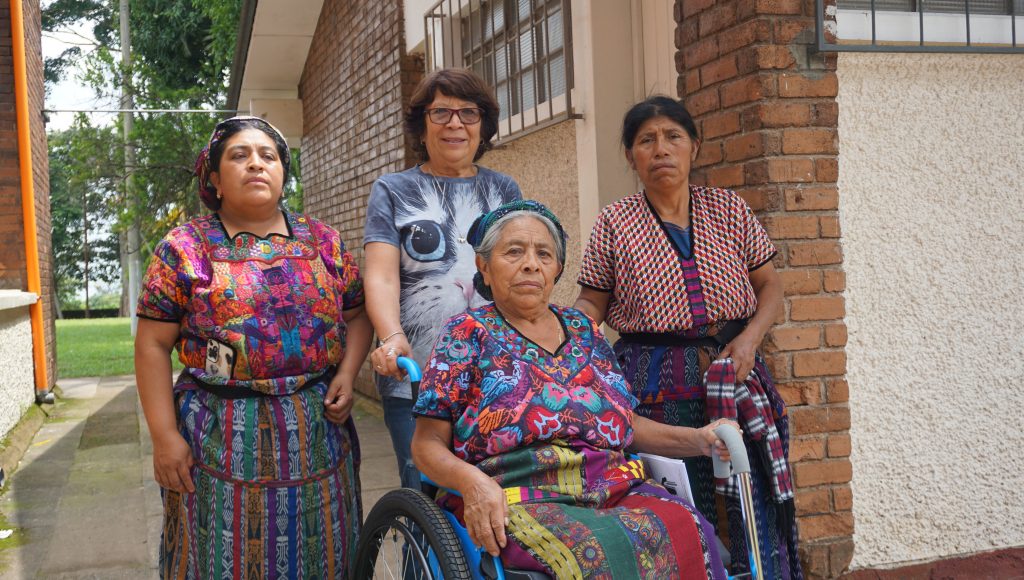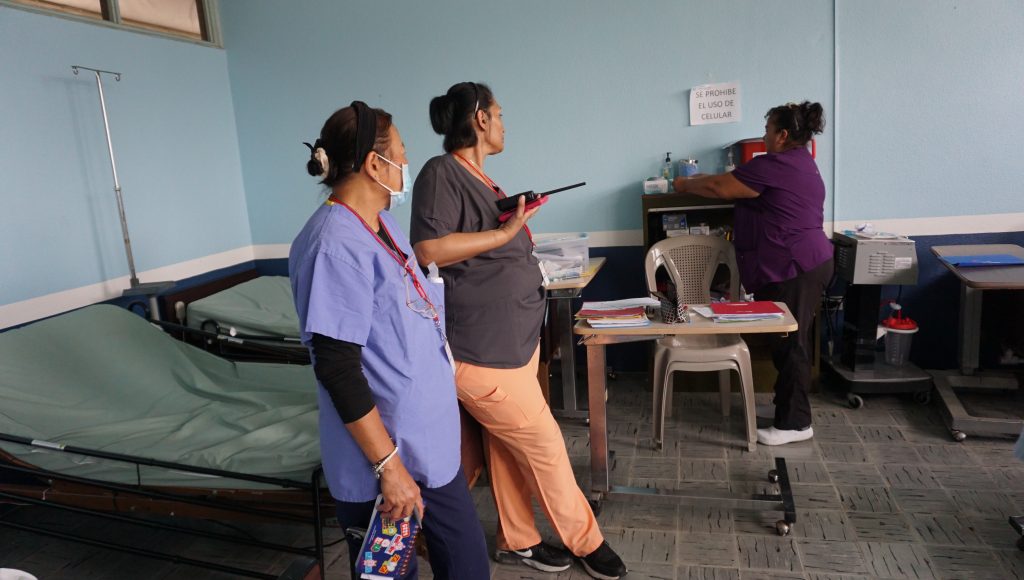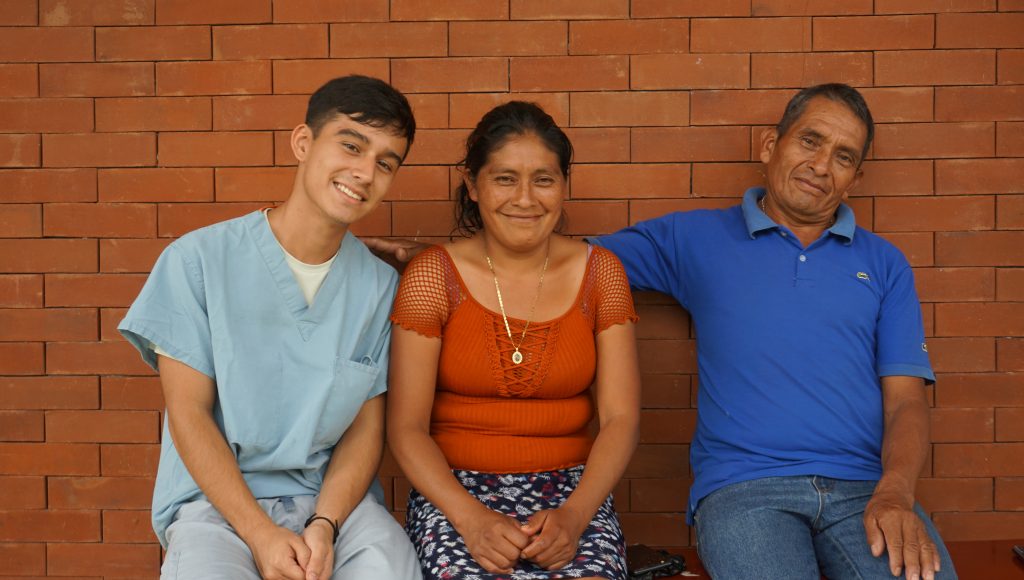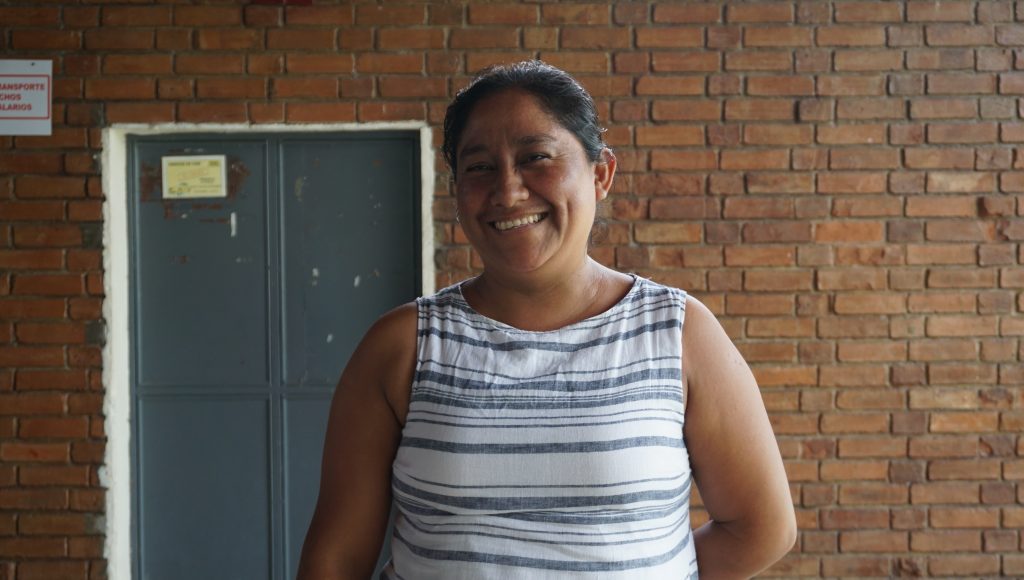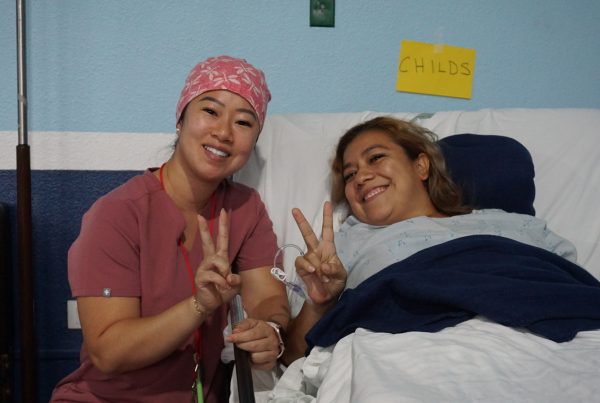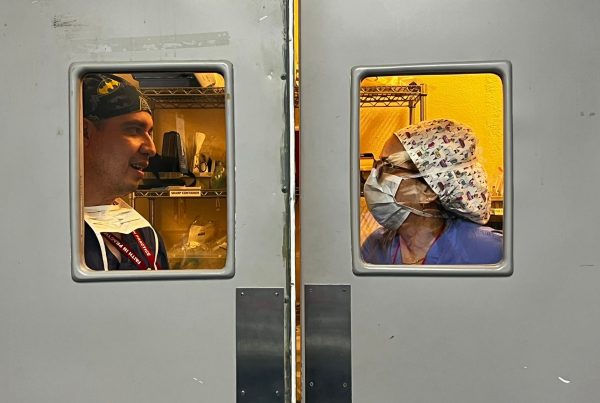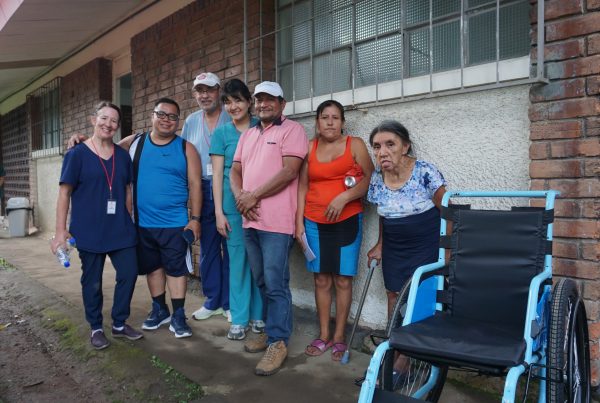Blog, 24 June 25
It’s 6:02 a.m. and I’m the last one in the devotional/reflection space because I was taking photos from afar. The weather is slightly cool and still humid, still warm from the night prior. The team seems to be in good spirits, the steady volume of the collective conversations like grass to the flowers of bird calls.
During the reflection Tony tells us, “we’re blessed. And it’s not for us to keep for ourselves. We can’t take it for granted the opportunity to help these people who allow us into their lives.” While talking about both the team and the local community, he referred to the words of Mother Teresa: “if you are humble, nothing will touch you, neither praise nor disgrace, because you know what you are.” Humility is the “mother of all virtues,” she says.
Tony invites some team members to share stories that were meaningful to them. Julie, a physical therapist, shares one about a father who had a stroke which heavily limited his independent ambulation capability and thus can’t walk. His children, who’d accompanied him to the mobility clinic, mentioned that they share the labor of care amongst themselves. When asked how he gets from place to place, his kids said they carried him. She said it was really great to give him the wheelchair. Oscar, one of our translators, shared a story today about a woman I’d written briefly about yesterday. It was a little lady who lived with her daughter. She was short, under 4’6”. Her family wanted a wheelchair for her. She refused. Her family then requested a walker. She refused. She asked for a cane and was so happy to receive one. She wanted to keep walking, determined to do so. He tried to compromise with her: “I’ll give you the cane if you sit in the wheelchair.” She refused.
Tony ended by inviting the group to listen to and sing along with “Lovely Day” by Bill Withers. He told us that each morning he wakes with a different song in his being and today was this song.
I spent some of the morning at the mobility clinic. The assembly team had prepared adequately for the work ahead, and they were able to take their time individualizing the fit of the wheelchairs and walkers under the direction of Julie and Jany, an occupational therapist. The morning started slowly, with 11 patients waiting. While they both worked directly with patients, there was a bus that pulled into the space behind the mobility clinic. Two members of the assembly team, Clayton (from the US) and Moises (from Guatemala), and I pulled three already-assembled wheelchairs and used them to transport people from the bus to the waiting area, a gap of maybe 30-40 feet. The folks getting off the bus were largely older adults, and with some of them were family members. I could see through the window that they were sitting on the chairs of the bus while they waited for a chair to be available. We brought them to chairs that had been laid out and helped them transition into one, and then we went back to help someone else.
With permission from Jany, I sat in on her working with a patient who’d come in with his daughter-in-law. He was experiencing pain in his knee and was in a wheelchair. With his and Jany’s permission I documented the process of him adjusting to and learning about the wheelchair he was receiving, a medium-size generation 2 (gen2) chair. There are two types of chairs available, a gen2 and a gen3. The primary difference between the two is that the gen3 is collapsible. Otherwise, they were anatomically and physiologically alike: the seats and backrest were woven nylon adhered to the chair with straps that were hand-tied and the chairs came with a backup tire pump and wrench so that the chair could be adjusted and repaired from home. This patient was recommended a gen2 chair because it was unlikely that he would be ambulating on and off of the chair often throughout the day due to the pain and discomfort he was experiencing. For example, someone being recommended a gen3 might be more likely to go to an appointment from chair to car or to bus and then from bus to chair and back again. I’ve included photos of him, shared with permission from both him and his daughter-in-law. You’ll see is bright green hat. I told him, with Michelle helping translate, that I liked the two colors of his hat. He tipped it and began offering it to me, and we both laughed when I said “no thank you.” Classic joke from a classy man.
There was a bus that arrived with many people from the same village. The men arrived in polos and pants and the women arrived in huipil. These culturally significant garments are more common to women nowadays because for men it can be too expensive to purchase or maintain, which is why men typically do not wear it day to day. I’ve included a few photos where you can see the intricate designs of each one. Clarissa, one of our team leaders, explained to me that patterns and motifs can be specific to villages, communities, or families. After many of them had gotten the wheelchairs they came for, their families had arranged them in a semi-circle just outside the mobility clinic. One of their daughters, maybe 50-60 years old, remarked: “Beautiful, isn’t it?”
While walking around the facility with Esteban, we ran into a few different people waiting for someone in surgery, or at least somewhere in the treatment process. One woman was there with her father. They had traveled 12 hours to receive help for both her and her mother. It was heartbreaking to learn that she was there also hoping to get help for pain in her torso but being referred to another care team. She seemed in good spirits as she waited for her mother to recover from surgery but it was evident that she would benefit from medical care as well. The impact here by Faith in Practice is immeasurable because how can you quantify the relief of a person whose daily experience is indelibly improved? But there’s still so much to do. I think the best we can do is what we’re doing now: keep going.
Nicolas Petelo, Blogger


